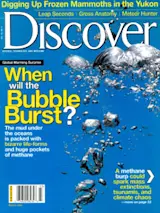Once they were huge, the electronic equivalents of Zeus on Mount Olympus, cumbersome, cranky, and commanding constant care. More recently, they have become abstract and ethereal, shrinking into mote-size microprocessors and vanishing into wireless networks yet retaining the power to awe, chasten, and grant blessings. In their seventh decade, electronic computers have morphed again. They are not just tools but objects worthy of contemplation in their own right. And now they have their own museum, a secular temple, if you will, devoted to explaining how and why they came to be.
A day spent at the new Computer History Museum in Mountain View, California, rekindles the wonder the big old machines must have inspired in their postwar creators. “People reach a point—it can be at age 16 or 60—when they realize there is more to life than the next new thing,” says John Toole, executive director of the museum. “It’s ...















